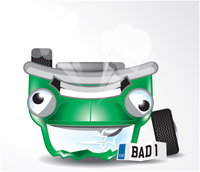Used car buyers urged to beware of cut and shuts masquerading as a bargain

Used car buyers continue to fall prey to criminals selling dangerous ‘cut ‘n’ shut’ vehicles at bargain prices, warns HPI, the provider of hpicheck.com. A ‘cut ‘n’ shut’ is a car made from two accident damaged vehicles, which are welded together to form what appears to be one dream machine. HPI urges buyers to get that vehicle checked, to avoid throwing their money away on a death trap in disguise.
Every year, nearly half a million cars that have been involved in accidents are declared as insurance write-offs. This is because they are either too badly damaged to ever be repaired and put safely back on the road or simply cost too much in parts and labour to justify the expense. Unfortunately, some of these cars make their way into unscrupulous hands and are illegally patched up or welded together, ready to be sold to unsuspecting buyers.
“What looks like a dream car at a dream price, could actually be a Frankenstein car, stitched together from two insurance write-offs that are fit only for the scrapheap,” warns hpicheck.com Senior Consumer Services Manager, Shane Teskey. “Criminals create cut ‘n’ shuts using two opposite halves of written off cars that are the same make and model. They are welded together by a skilled mechanic and spray painted to form a car that’s then sold on to innocent consumers at what looks like a bargain price.
“Although buyers stand to lose a lot of money on a car that’s worthless, the real danger is the car itself. Car manufacturers invest heavily in vehicle safety, making sure every model of car reacts in a certain way in a collision, and that its structure provides maximum protection for the driver, passengers and pedestrians. Cut ‘n’ shut vehicles are fundamentally dangerous because the integrity of the car’s structure has been altered, significantly weakening its ability to withstand any impact in an accident. Anyone buying one of these vehicles could be risking the lives of themselves, their passengers and other road users.”
An HPI Check plays a crucial role in warning customers of a potential cut ‘n’ shut. First, it can detect if the identity of a vehicle has been tampered with by cross-referencing the vehicle’s registration number (VRM) and its unique 17 digit vehicle identification number (VIN). If these do not match, it could signify criminal activity. Buyers should always try and check the VIN in three places on the vehicle – at the very least the VIN on the front and back of the vehicle. Furthermore, an HPI Check will confirm whether a vehicle has been written off in the past and to what degree. All this information offers buyers invaluable tools to help detect a potential cut ‘n’ shut.
Shane Teskey concludes, “Any cut ‘n’ shut vehicle is bad news for motorists, because they are incredibly difficult to spot with the naked eye. Highly skilled mechanics and welders, plus a shiny paint job and a temptingly low price, make these vehicles appear too good to be true. However, when a bargain seems too good to be true, it probably is, so just walk away.”
HPI’S tips on spotting a cut 'n' shut
Always view the car in daylight. Viewing in poor light, rain or at night can make it harder to spot any flaws.
Look for mismatched panels, doors, bonnet and any other joins.
Cut and shuts are usually joined at the top of the rear windscreen and through the C-pillars - pay close attention to these areas.
Look for any traces of spray paint on the door handles and glass.
Look at the supporting pillars and doorframes for any signs of welding. Pulling back the car upholstery in these areas may reveal welding joints or differences in paint colour.
Make sure you check for mismatched or badly fitted upholstery.
Check the MOT and past service history. Make sure it is consecutive and there are no gaps.
Take the car for a test drive for at least 10-15 minutes along a variety of roads.
Check the VIN number on the paperwork against the VIN numbers on the car – these will be stamped in the engine bay, in the driver foot well/door, and in the boot. The more VINs you can locate and check, the more confident you can be of the car’s legitimacy.
Always try to find the VIN in 3 places, particularly at either end of the vehicle. If you aren’t sure where to find them, your local franchised dealer can help you.
Don’t pay less than 70% of the market value for a car, cars offered for less than they should be for ‘a quick sale’ could have something sinister to hide.
Finally, to be 100 per cent confident, get an HPI Check and an independent vehicle inspection from a reputable company such as the AA or Dekra.
To conduct an HPI Check log on to hpicheck.com, or call the dedicated number on 0845 300 8905.
The HPI Check includes a mileage check against the National Mileage Register as standard, now with over 170 million mileage readings. HPI also confirms whether a vehicle is currently recorded as stolen with the police, has outstanding finance against it or has been written off, making it the best way for consumers to protect themselves from fraudsters looking to make a fast profit. In addition, the HPI Check offers a £30,000 Guarantee* in the event of the information it provides being inaccurate, offering added financial peace of mind to used car buyers.

